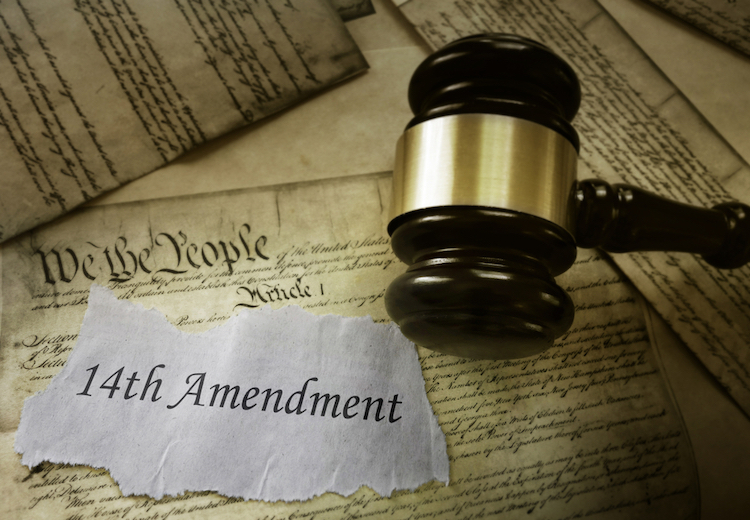Legal Insights on Forthcoming Federal Paid Family and Medical Leave Legislation
Senators Kirsten Gillibrand (D-NY) and Bill Cassidy (R-LA) and Representatives Chrissy Houlahan (D-PA) and Stephanie Bice (R-OK) are leading bipartisan bicameral working groups to explore a federal paid leave program. The Working Groups issued a Request for Information (RFI), seeking input from a host of entities, ranging from unions, care advocacy groups, business groups, and think tanks, to suggest ideas on how the program should be funded, the suggested scope, and the role of the federal government. Requests for responses are due January 31, 2024.
Reps. Houlahan and Bice recently unveiled the progress of a bipartisan Paid Family Leave Working Group that held several meetings to explore Paid Family and Medical Leave (PFML) legislation. While no details have been released so far, topics examined by the working group provide some insight. Checkpoint Payroll discussed these possibilities with Carrie Hoffman, Chair of Foley & Lardner’s Labor and Employment Practice, who shared her thoughts on the various components that PFML legislation may tackle.
Family and Medical Leave Act
The Family and Medical Leave Act (FMLA) requires certain employers to provide eligible employees to provide up to 12 weeks of unpaid leave for absences related to the birth, adoption, or placement of a child, illness, or caregiving to an ill family member. Additionally, up to 12 weeks of FMLA leave may be used for job-protected leave due to a family member’s military service and up to 26 weeks of FMLA leave may be used to care for a family servicemember with a serious injury or illness incurred in the line of duty.
Bipartisan efforts towards national PFML program
Currently, under federal provisions, FMLA leave is unpaid. Over the years, members of Congress have proposed legislation that seeks to establish a paid family and medical leave (PFML) program. Most recently, PFML was proposed in the Build Back Better bill, which ultimately did not make it into the final version passed by Congress. However, the latest Congressional push is a bipartisan effort that signals that perhaps a national PFML program is on the horizon. The Paid Family Leave Working Groups plan to release a legislative framework soon.
Hoffman, who has advised employers on labor matters for over 30 years, theorized that based on the bipartisan nature of the efforts, a national PFML program would be unlikely to subject employers to an assessment. Rather, she said, more likely a federal PFML program would be an insurance program.
The role of private insurance companies
In April 2023 , the Working Group met with a number of private insurance companies to discuss what role they currently play in state PFML programs and how they could serve in a national program. Houlahan and Bice noted that “[s]olutions from the private sector will be critical” as the group formulates its proposals.
A good illustration of the use of insurance companies is New Hampshire’s voluntary paid family leave program that allows employers to opt into coverage. Hoffman explained that employers who opt in can purchase a plan with base coverage and can elect to provide additional coverage. For example, base coverage in New Hampshire provides up to six weeks of 60% wage replacement, however, employers may select a 12-week plan. Hoffman theorized that depending on what Congress requires under the program and what add-ons are permitted, employers may be able to use coverage as a means of attracting talent. For example, the law may only require 60% wage replacement, but with an add-on, an employer may be able to offer 80% wage replacement, making their benefits more competitive.
Hoffman noted another advantage of using private insurance is that “the employer can know what its actual costs are going to be because it’s paying premiums based on a set amount that it’s bought into a program” rather than the unpredictability of paying out full salary for 12 weeks as these events occur.
Current state PFML programs
The Working Group also met with representatives from Colorado, New Hampshire, New Jersey, Massachusetts, Washington, and the District of Columbia to discuss their PFML programs. These state programs vary in terms of their approach. For example, as noted, the New Hampshire program is the only state invited that has a voluntary program. The remaining participating states have required programs that vary based on employer size, number of weeks that benefits may be collected, whether employers or employees (or both) contribute towards the program, and whether contributions are subject to a wage cap such as the Social Security wage base limit. Hoffman further noted that some state programs may increase premiums, similar to unemployment insurance, based on the number of claims processed. Hoffman explained, “You have 10 people who’ve been out for leave this year, and that increases your premium costs for the next year type of thing.” However, Hoffman conjectured that due to the bipartisan nature of the efforts, she anticipates it will not be a program with full paid leave.
Further, Hoffman noted that the employer size requirement is a major difference between the current federal FMLA laws and state laws. Hoffman noted that from a federal perspective, the law has not changed. Under the federal FMLA, private employers with 50 or more employees in 20 or more workweeks in either the current or previous calendar year are subject to its requirements. State PFML laws differ in their employer size requirements. In the District of Columbia, all private employers must participate with contributions collected through the state unemployment insurance program while in Colorado, employers with 10 or more workers are required to contribute while those with fewer employees need only collect contributions from the employee. Hoffman explained that the impact on employers will depend on federal requirements. For example, Hoffman said that smaller employers may be subject to participation under a federal program if it is an insurance program rather than a dollar-for-dollar program with full salary for the duration of leave time.
Childcare and senior care considerations
During the COVID-19 pandemic, employees saw an increased need for time off due to the closures of childcare facilities and schools. Underpaid COVID-19 leave provisions, a qualifying reason included school and daycare closures. Also, senior care for family members was similarly impacted as senior day programs were shuttered. However, this is not a qualifying reason for federal FMLA purposes. While this is carved into some state-paid sick leave laws, generally, state PFML laws do not provide benefits for these events. The bipartisan Senate group makes this a priority in its potential legislative framework. Hoffman speculated about the challenges in creating a mechanism under the FMLA. She noted that such leave is typically unexpected when they occur under emergency circumstances, unless the legislation is crafted to work in planned closures such as winter break. She suspects that leave under these circumstances would likely be certified after the fact.
Safe leave considerations
Rep. Stephanie Bice (R-OK), one of the leaders of the Working Group, introduced legislation (HR 2996) seeking to amend the current FMLA to permit workers to use FMLA leave for safe leave purposes. Qualifying reasons for safe leave would include any absence related to domestic violence, sexual assault, or stalking committed against the employee or the employee’s family member. The federal FMLA does not specifically address this issue. However, the DOL notes in its FAQs that a worker may be eligible to use FMLA leave if a serious health condition resulted from domestic violence. Hoffman explained that by amending the FMLA, it would cover the event rather than the serious health condition that stems from it.
Common employer issues in FMLA administration
Hoffman discussed current employer challenges under the federal FMLA. The first issue that employers encounter is that employees fail to provide advance notice of the need for leave. While not all leave is foreseeable, Hoffman found that employees are “just not giving [employers] details… [and] not returning certification forms.” The second issue is that employers fail to properly complete paperwork. Hoffman noted that “the paperwork that goes along with FMLA can be burdensome on both sides.”
FMLA compliance for multistate employers
FMLA compliance can prove to be challenging for employers who operate in multiple states. As noted, the federal FMLA differs from state PFML laws as well as state FMLA laws that don’t call for paid leave. Hoffman acknowledged that multistate employers have a “hodgepodge” of laws to deal with and added if the employer voluntarily offers employees similar benefits, compliance can be “a little less burdensome.” Making sure HR personnel are trained in multistate requirements is key for multistate employer FMLA compliance, Hoffman advised.
Compliance audits and state law updates
Hoffman recommends third-party consultation with an employment law expert to handle compliance issues. She also endorses internal audits at the end of the year. Keeping up to date with state law changes is crucial to compliance since they change more frequently than federal laws, Hoffman cautioned. Further, Hoffman suggested that growing companies that are moving into a new state partner with someone who is familiar with that state’s laws and employer obligations.
House Working Group Report
The House Paid Family Leave Working Group released a report, A Year in Review, providing their findings.






